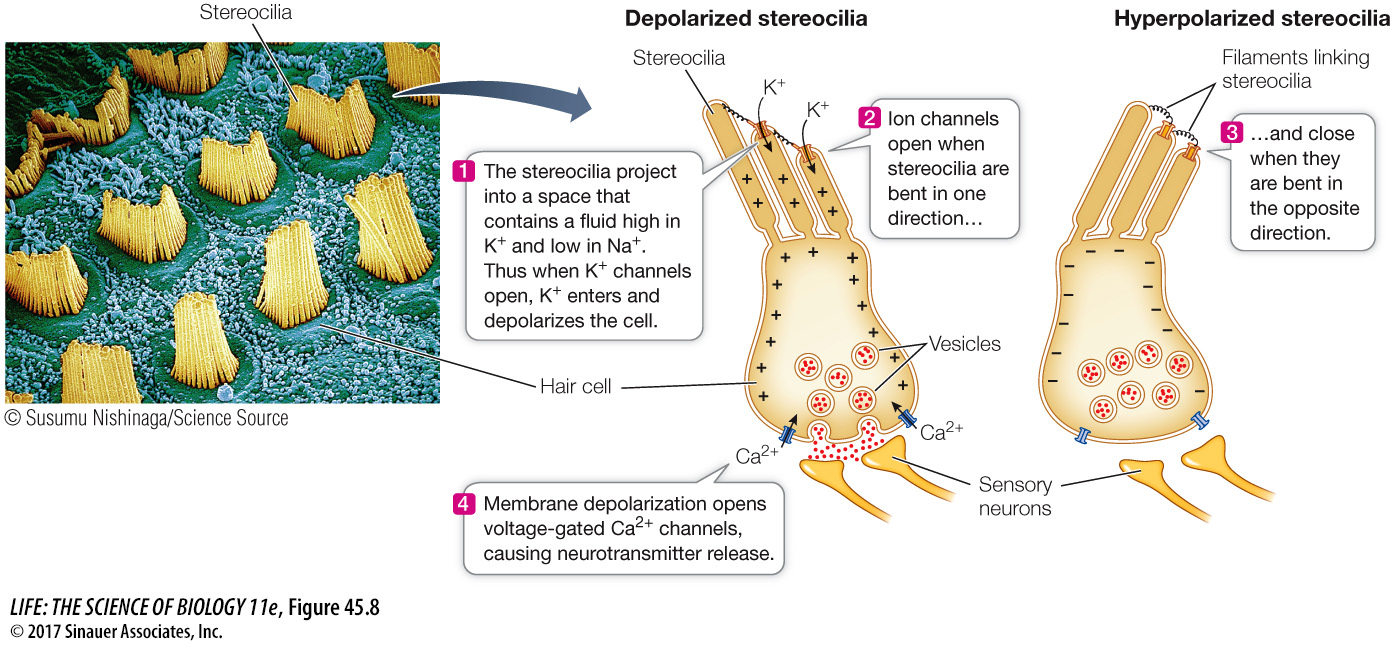Hair cells are mechanoreceptors of the auditory and vestibular systems
Hair cells are the mechanoreceptors for the vertebrate auditory (sound-perceiving) and vestibular (equilibrium-maintaining) systems. Both of these systems are housed in the complex structures of the vertebrate ear. Stereocilia—fingerlike extensions of the cell membrane stiffened by cross-linked actin filaments—project from the surface of each hair cell like a set of organ pipes (Figure 45.8). Stereocilia bend in response to waves of pressure; bending of the stereocilia in one direction depolarizes the hair cell, and bending in the other direction hyperpolarizes it.

Figure 45.8 Hair Cells Have Mechanosensors on Their Stereocilia Hair cells have stereocilia that are connected with each other by small filaments. When a cilium is bent in one direction, the filament opens a cation channel at the tip of the neighboring cilium, resulting in depolarization of membrane potential. When depolarized, the hair cell releases neurotransmitter onto a sensory neuron. Movement of the hair cell in the opposite direction closes the cation channel and the cell hyperpolarizes, causing a reduction in its release of neurotransmitter.
Measurements with microelectrodes have shown that the bending of stereocilia creates local electric currents near their tips, indicating that ion channels near the tips must be opening or closing. Electron microscope images reveal minute filaments that connect the tip of each stereocilium to its taller neighbor. It is hypothesized that these filaments are fine molecular attachments to the ion channels, and that they act like springs that open the channels. If the taller neighboring stereocilium is bent away, the spring tightens and the ion channel is opened. If the taller neighbor bends toward its shorter neighbor, the spring is relaxed and the channel closes (see Figure 45.8).
